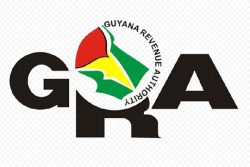Introduction
Today’s column shifts the focus of my analysis of the likely impacts of the 2020 General Crisis, (as I have portrayed this) on Guyana’s infant oil and gas sector to its more speculative or forward-looking dimensions. It seeks to estimate the impacts over a short to medium-term time-frame; that is, to the mid-2020s. Next week’s column will focus more specifically on the likely impacts over the medium to long-term (secular) time-frame. That is, from the mid-2020s to the early 2050’s. This latter time-frame coincides with the Energy Information Administration’s (EIA) 2018-2050 projection of the global energy mix.
The primary reason for separating the estimation into these two time-frames is that the information, which must be covered for an effective appraisal, is far too much to be fruitfully accomplished in a single column. An additional consideration is that the lead Producer Group in Guyana’s infant petroleum sector has posted, since 2018, the mid-2020s as the horizon-deadline for their current endeavors.
The Producer Group: Impacts
As readers of this column are aware, the sole crude oil Producer Group in Guyana has gone well beyond exploration. It is into development (project preparation and implementation), production (of crude oil for commercial sale) and distribution of earned profits, (as agreed in Guyana’s Production Sharing Agreement (PSA). Esso Exploration and Production Guyana, Ltd (ExxonMobil – 45 per cent) is the group’s lead Operator. Together with its partners (Hess Guyana Exploration Ltd, 30 per cent) and (CNOOC Nexen Petroleum Guyana, 25 per cent) they constitute as of now, the only producer of crude oil.
The Group’s production has been confined to their Stabroek block holdings, where 16 discoveries have been made to date. The 16th discovery, Uaru, has not yet been added to its calculation of recoverable resources. However, 15 discoveries at December 31, 2019 have estimated recoverable resources of at least 8 billion barrels of oil equivalent (BOE). Today, there is no other imminent producer group or groups. However, until recently, the Tullow Exploration Group had come closest to that possibility, until it ran into problems in 2019. In March 2020, its Executive Chairperson confessed that: “Poor discoveries in Guyana, served as further setbacks.”
Current data from the parent companies in the lead producer Group reveal that for all its members, Guyana’s offshore finds remain essential to their future profitability. Thus, ExxonMobil, in response to the 2020 general crisis, has cut its global capital expenditure budget by 30 per cent and its cash operating expenditure budget by 15 per cent. This is in response to a share price decline in Q1 2020 of 14 cents, compared to a gain of 55 cents per share in Q1 2019. Further, the company recorded its first quarterly deficit, in over three decades.
The parent companies of the two other partners have fared similarly. And, both continue to indicate the prioritization of Guyana’s offshore discoveries in their future profitability. Thus, Hess has cut its capital and exploration budget going forward by nearly 40 per cent, and taken a US$1 billion three-year term loan, but intends to maintain spending on its profitable priorities in the Bakken and Guyana. Similarly, CNOOC is cutting its capital expenditure by about 10 to 15 per cent for 2020, after coming off an “excellent year” in 2019 but also prioritises its Guyana holdings, going forward.
Short to Medium-Term Impacts
As I contemplate the short to medium term, I can only be certain of two predictions. The first is that crude oil market outcomes will remain exceptionally fluid and uncertain for all the reasons indicated in preceding columns. Second, over the short to medium-term, the collateral economic impacts of the COVID-19 pandemic will dominate the performance of the crude oil market. Regrettably, those effects are complicated to predict because the outcome of the pandemic depends on uncertain and unpredictable developments, like the successful deployment of effective vaccines; developing COVID-19 specific therapies; and, mutations of the virus.
As I prepare this column, I am struck by the widely different positions seasoned analysts and specialists in the field of energy (crude oil marketing) take concerning the immediate to near term future of the 2020 general crisis. Some see the future heading towards a rapid structural shift in the global energy mix and the swift demise of the crude oil sector as we know it today. In support of this point of view they point to the fact that, the fastest rate of decline in the United States oil rigs count, has occurred between March 13 and May 23, 2020. In a period of about 6 weeks, about two-thirds of the United States’ oil rigs were removed from production! I’ll discuss this group’s views next week.
At the other extreme are those analysts who predict an early substantial recovery of the crude oil market; as early as before the end of this year! Their prediction is based on several occurrences: namely, 1) the noticeable improvement in storage capacity for crude oil; 2) the steady growth in gasoline demand as lockdown conditions are progressively eased worldwide; 3) preparations already in train for the re-opening of travel, airlines, hospitality, leisure, sports, restaurants, seasonal services, medical services, education and other similar employment intensive sectors in the major global economies; and, 4) the prolongation of Government safety-net spending on a global scale.
Given all the above, the consensus expectation is for a fairly rapid revival of global energy demanded, hopefully, in the second half of 2020, but more certainly in the third quarter of 2020.
Conclusion
After studying the available data I conclude firmly that the target set by ExxonMobil and partners back in July 2018 to produce 750,000 BOE per day by 2025 is achievable. To cater for present challenges, the Group has shifted the target date one year forward to 2026. That may be prudent, but the present state of play has not generated, at this point, a confident rejection of full ramp-up of crude oil production by the mid-2020s. The situation as regards natural gas production should be clarified in 2021.
Next week I shift my concern to the medium to long-term (secular) time-frame.









